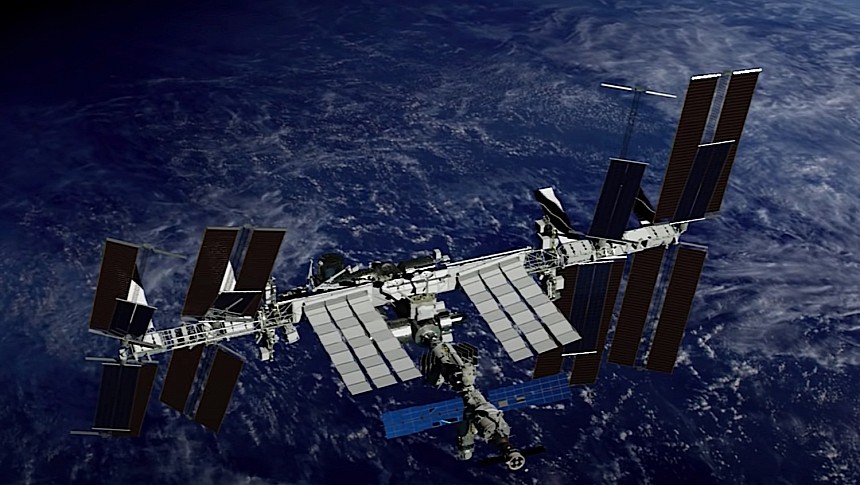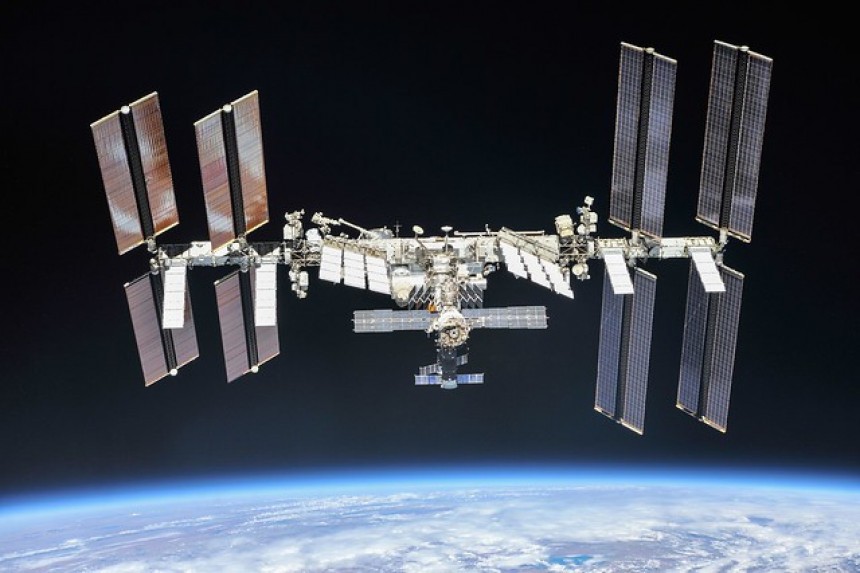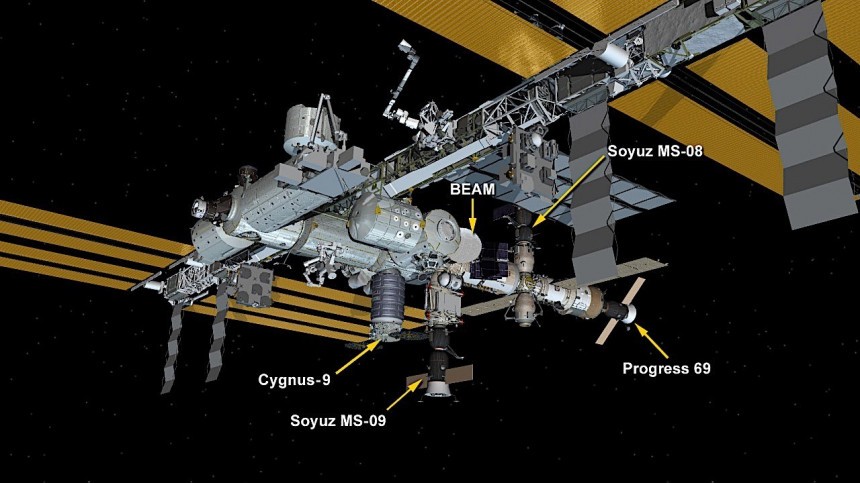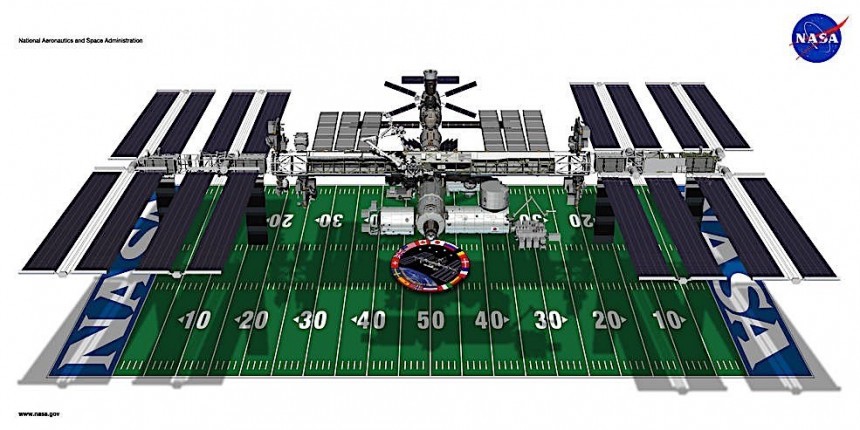There have been several instances in our collective past when spacecraft, satellites, and other types of artificial hardware we sent up to orbit came back down in an uncontrolled manner. Some of them caused quite the scare here and there, others went by unnoticed, but the good thing is that in the end no one was hurt, to date, by falling human-made space debris.
No matter how many times uncontrolled deorbiting occurred, the size and volume of falling spacecraft were relatively minor, so even in the odd scenario a strike on a populated area would have occurred, the impact would probably have been minimal.
Not the same can be said about the effects of an out-of-control International Space Station (ISS). The thing is the size of an American football field and weighs about 450 tons, so if it strikes a populated area, it'll spell disaster.
As most of you know, the space station, which has been up in orbit helping us humans do science ever since 1998, has come to the end of its natural life. Decay the likes of which is beyond repair is slowly starting to take over the station, and it will have to be put down at the end of the current decade.
The deorbiting of the ISS is currently at the center of attention for NASA planners. The space agency recently published the International Space Station Transition Plan, a document which not only details the ins and outs of the ISS and what comes next, but also gives us a closer look at how the entire deorbiting procedure will take place.
Last week we discussed that part of the plan that talked about the scenarios the space agency considered as an alternative to a controlled deorbit. Three main ideas were reviewed, namely the disassembling of the ISS in orbit, raising it to a graveyard orbit, or allowing it to crash and burn in the atmosphere on its own.
All three scenarios were rejected based on the findings we've already discussed. So, the only viable future for the ISS is its controlled descent into the atmosphere and the crashing of its remains in one of the planet's oceans.
But how exactly do the five space agencies that are operating the ISS – American NASA, Canadian CSA, European ESA, Japanese JAXA, and Russian Roscosmos – plan to safely bring down the station?
The International Space Station Transition Plan has that covered to some degree as well. The specifics of the operation are not detailed, but what is included in the document gives us a pretty good idea of what to expect.
The whole procedure will be a combination of the station's natural decay with the intentional lowering of the orbit by means of propulsive spacecraft (the ISS does not have much of a propulsion means itself). And at the end, a sprinkle of a re-entry maneuver should point the station in the right direction, allowing it to fall far from populated areas.
The first step of the process is handled by nature itself. Because it orbits our planet at an altitude of just a little over 400 km (250 miles), the place is not really free of Earth's atmosphere.
By rubbing against it as it circles the planet, the laboratory suffers from something called orbital decay. The 430,000 kg (almost 950,000 pounds) hunk of hardware is literally dragged down, and every two years or so it's in need of re-boosts. Giving up on trying to maintain orbit should do the first trick of the deorbiting maneuver.
Leaving the station to drop this way all the way down would rob space agencies of their control of the station as it falls, so a propulsive maneuver will at some point be required.
NASA says it studied a plan to use three Russian Progress spacecraft for the task. The cargo hauler has been around since 1978, having flown about 150 times since. A reliable piece of hardware, but apparently not enough for the task at hand.
Without saying why, NASA stated the Progress trio would not work as expected, so someone would have to design a new or adapt an existing spacecraft specifically for the task. Work is already underway to find a suitable solution for the creation of a vehicle the agency calls, for now, the U.S. Deorbit Vehicle, but the details on it, other than that it will have to carry an important amount of fuel, are not known at this point.
The ship won't fire its killer thrusters before all ISS crew is safely back on the surface of the planet. Once it does, there's no coming back from this.
Once the station is committed to falling to Earth, it will be pointed at a remote location in the ocean. One suitable target would be the Pacific Point Nemo, one of Earth's poles of inaccessibility. What that means is that the location is the most difficult to reach by any means: the closest land mass is 2,688 km (1,670 miles) away from it.
During re-entry, the station will naturally ignite and start to break apart. Given how this is "the largest single structure ever built in space," it represents "physics and engineering challenges" for the people trying to figure out exactly how the station will break up and where its component parts will actually end up.
The ISS is a very complex build, featuring distinct components. Simply put, though, it's made up of the truss on which the solar arrays, radiators, and modules are installed.
NASA believes the first to go (meaning separate from the main structure) will be the solar array and radiator. Then the modules will shake loose, probably still intact at this point, and finally the truss.
Once separated, each of these elements will start to disintegrate. The extreme temperatures experienced during re-entry will burn most of the hardware away, but more resistant elements, like say the truss, will make it all the way down. It will likely sink to the bottom of the ocean, leaving no trace of its existence other than the many videos of it coming down that will definitely be recorded for all eternity by live TV cameras.
And that will be all for the ISS. At one point NASA considered saving some parts of it, to be used as either teaching material or redeployed as part of some future commercial space station. It asked the industry about this, but it "received no viable interest," so probably no significant part of the station will survive post-deorbiting.
Not the same can be said about the effects of an out-of-control International Space Station (ISS). The thing is the size of an American football field and weighs about 450 tons, so if it strikes a populated area, it'll spell disaster.
As most of you know, the space station, which has been up in orbit helping us humans do science ever since 1998, has come to the end of its natural life. Decay the likes of which is beyond repair is slowly starting to take over the station, and it will have to be put down at the end of the current decade.
The deorbiting of the ISS is currently at the center of attention for NASA planners. The space agency recently published the International Space Station Transition Plan, a document which not only details the ins and outs of the ISS and what comes next, but also gives us a closer look at how the entire deorbiting procedure will take place.
Last week we discussed that part of the plan that talked about the scenarios the space agency considered as an alternative to a controlled deorbit. Three main ideas were reviewed, namely the disassembling of the ISS in orbit, raising it to a graveyard orbit, or allowing it to crash and burn in the atmosphere on its own.
But how exactly do the five space agencies that are operating the ISS – American NASA, Canadian CSA, European ESA, Japanese JAXA, and Russian Roscosmos – plan to safely bring down the station?
The International Space Station Transition Plan has that covered to some degree as well. The specifics of the operation are not detailed, but what is included in the document gives us a pretty good idea of what to expect.
The whole procedure will be a combination of the station's natural decay with the intentional lowering of the orbit by means of propulsive spacecraft (the ISS does not have much of a propulsion means itself). And at the end, a sprinkle of a re-entry maneuver should point the station in the right direction, allowing it to fall far from populated areas.
The first step of the process is handled by nature itself. Because it orbits our planet at an altitude of just a little over 400 km (250 miles), the place is not really free of Earth's atmosphere.
Leaving the station to drop this way all the way down would rob space agencies of their control of the station as it falls, so a propulsive maneuver will at some point be required.
NASA says it studied a plan to use three Russian Progress spacecraft for the task. The cargo hauler has been around since 1978, having flown about 150 times since. A reliable piece of hardware, but apparently not enough for the task at hand.
Without saying why, NASA stated the Progress trio would not work as expected, so someone would have to design a new or adapt an existing spacecraft specifically for the task. Work is already underway to find a suitable solution for the creation of a vehicle the agency calls, for now, the U.S. Deorbit Vehicle, but the details on it, other than that it will have to carry an important amount of fuel, are not known at this point.
The ship won't fire its killer thrusters before all ISS crew is safely back on the surface of the planet. Once it does, there's no coming back from this.
During re-entry, the station will naturally ignite and start to break apart. Given how this is "the largest single structure ever built in space," it represents "physics and engineering challenges" for the people trying to figure out exactly how the station will break up and where its component parts will actually end up.
The ISS is a very complex build, featuring distinct components. Simply put, though, it's made up of the truss on which the solar arrays, radiators, and modules are installed.
NASA believes the first to go (meaning separate from the main structure) will be the solar array and radiator. Then the modules will shake loose, probably still intact at this point, and finally the truss.
Once separated, each of these elements will start to disintegrate. The extreme temperatures experienced during re-entry will burn most of the hardware away, but more resistant elements, like say the truss, will make it all the way down. It will likely sink to the bottom of the ocean, leaving no trace of its existence other than the many videos of it coming down that will definitely be recorded for all eternity by live TV cameras.
And that will be all for the ISS. At one point NASA considered saving some parts of it, to be used as either teaching material or redeployed as part of some future commercial space station. It asked the industry about this, but it "received no viable interest," so probably no significant part of the station will survive post-deorbiting.















